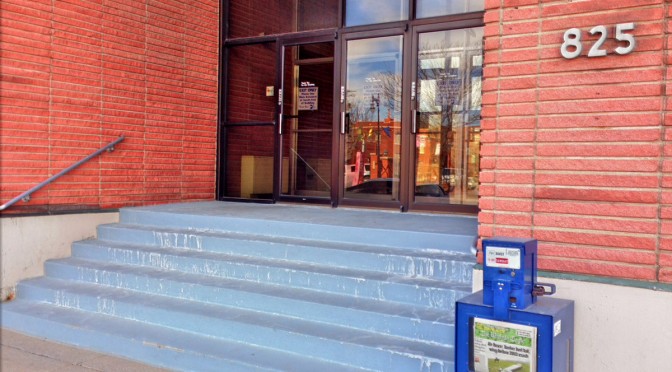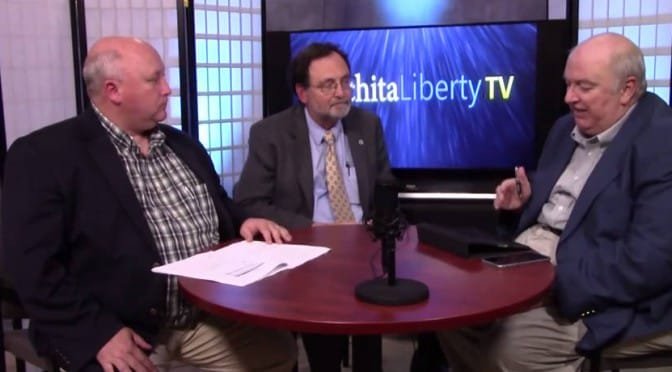In Sedgwick County, we see that once companies are accustomed to government entitlements, any reduction is met with resistance.
When an executive of Spirit Aerosystems accused the Sedgwick County Commission of “working against us,” the company may have forgotten the assistance and special treatment the company has received from local governments and taxpayers. This assistance has amounted to hundreds of millions of dollars over several decades, when we consider both Spirit and its predecessor, Boeing.
Now, Spirit objects to a proposed reduction in funding to Wichita Area Technical College, and also cuts to local attractions such as the zoo. The proposed cut to WATC is less than the cut made the year before, although part of that cut was rescinded, making the proposed cut equal to last year’s cut. These cuts follow a trajectory recommended by the former county manager, who was widely praised as understanding and accommodating the needs of area business firms.
So when Spirit accuses county taxpayers as working against the company, it’s a little hard to stomach. Residents of Sedgwick County pay higher taxes so that Spirit can pay less.
Especially glaring is when companies ask for forgiveness of paying sales tax, as Spirit routinely does. In Kansas, low-income families must pay sales tax on their groceries, and at a rate that is among the highest in the country. Even more difficult to fathom are the companies that campaigned for a higher sales tax in Wichita, but engage in financial maneuvers designed to avoid paying any sales tax. Sometimes companies campaign for higher property taxes, especially school bonds, but then ask for exemption from paying those taxes. 1 2 3
Following, a discussion of a Spirit Aerosystems tax abatement request from 2014.
This week the Wichita City Council will hold a public hearing concerning the issuance of Industrial Revenue Bonds to Spirit AeroSystems, Inc. The purpose of the bonds is to allow Spirit to avoid paying property taxes on taxable property purchased with bond proceeds for a period of five years. The abatement may then be extended for another five years. Additionally, Spirit will not pay sales taxes on the purchased property.
City documents state that the property tax abatement will be shared among the taxing jurisdictions in these estimated amounts:
City: $81,272
State: $3,750
County: $73,442
USD 259: $143,038
No value is supplied for the amount of sales tax that may be avoided. The listing of USD 259, the Wichita public school district, is likely an oversight by the city, as the Spirit properties lie in the Derby school district. This is evident when the benefit-cost ratios are listed:
City of Wichita: 1.98 to one
General Fund: 1.78 to one
Debt Service: 2.34 to one
Sedgwick County: 1.54 to one
U.S.D. 260: 1.00 to one (Derby school district)
State of Kansas: 28.23 to one
The City of Wichita has a policy where economic development incentives should have a benefit cost ratio of 1.3 to one or greater for the city to participate, although there are many loopholes the city regularly uses to approve projects with smaller ratios. Note that the ratio for the Derby school district is 1.00 to one, far below what the city requires for projects it considers for participation. That is, unless it uses one of the many available loopholes.
We have to wonder why the City of Wichita imposes upon the Derby school district an economic development incentive that costs the Derby schools $143,038 per year, with no payoff? Generally the cost of economic development incentives are shouldered because there is the lure of a return, be it real or imaginary. But this is not the case for the Derby school district. This is especially relevant because the school district bears, by far, the largest share of the cost of the tax abatement.
Of note, the Derby school district extends into Wichita, including parts of city council districts 2 and 3. These districts are represented by Pete Meitzner and James Clendenin, respectively.
The city’s past experience
 Spirit Aerosystems is a spin-off from Boeing and has benefited from many tax abatements over the years. In a written statement in January 2012 at the time of Boeing’s announcement that it was leaving Wichita, Mayor Carl Brewer wrote “Our disappointment in Boeing’s decision to abandon its 80-year relationship with Wichita and the State of Kansas will not diminish any time soon. The City of Wichita, Sedgwick County and the State of Kansas have invested far too many taxpayer dollars in the past development of the Boeing Company to take this announcement lightly.”
Spirit Aerosystems is a spin-off from Boeing and has benefited from many tax abatements over the years. In a written statement in January 2012 at the time of Boeing’s announcement that it was leaving Wichita, Mayor Carl Brewer wrote “Our disappointment in Boeing’s decision to abandon its 80-year relationship with Wichita and the State of Kansas will not diminish any time soon. The City of Wichita, Sedgwick County and the State of Kansas have invested far too many taxpayer dollars in the past development of the Boeing Company to take this announcement lightly.”
Along with the mayor’s statement the city released a compilation of the industrial revenue bonds authorized for Boeing starting in 1979. The purpose of the IRBs is to allow Boeing to escape paying property taxes, and in many cases, sales taxes. According to the city’s compilation, Boeing was granted property tax relief totaling $657,992,250 from 1980 to 2017. No estimate for the amount of sales tax exemption is available. I’ve prepared a chart showing the value of property tax abatements in favor of Boeing each year, based on city documents. There were several years where the value of forgiven tax was over $40 million.

Boeing is the poster child for corporate tax incentives. This company has benefited from property tax incentives, sales tax exemptions, infrastructure investments and other tax breaks at every level of government. These incentives were provided in an effort to retain and create thousands of Kansas jobs. We will be less trusting in the future of corporate promises.
Not all the Boeing incentives started with Wichita city government action. But the biggest benefit to Boeing, which is the property tax abatements through industrial revenue bonds, starts with Wichita city council action. By authorizing IRBs, the city council cancels property taxes not only for the city, but also for the county, state, and school district.












